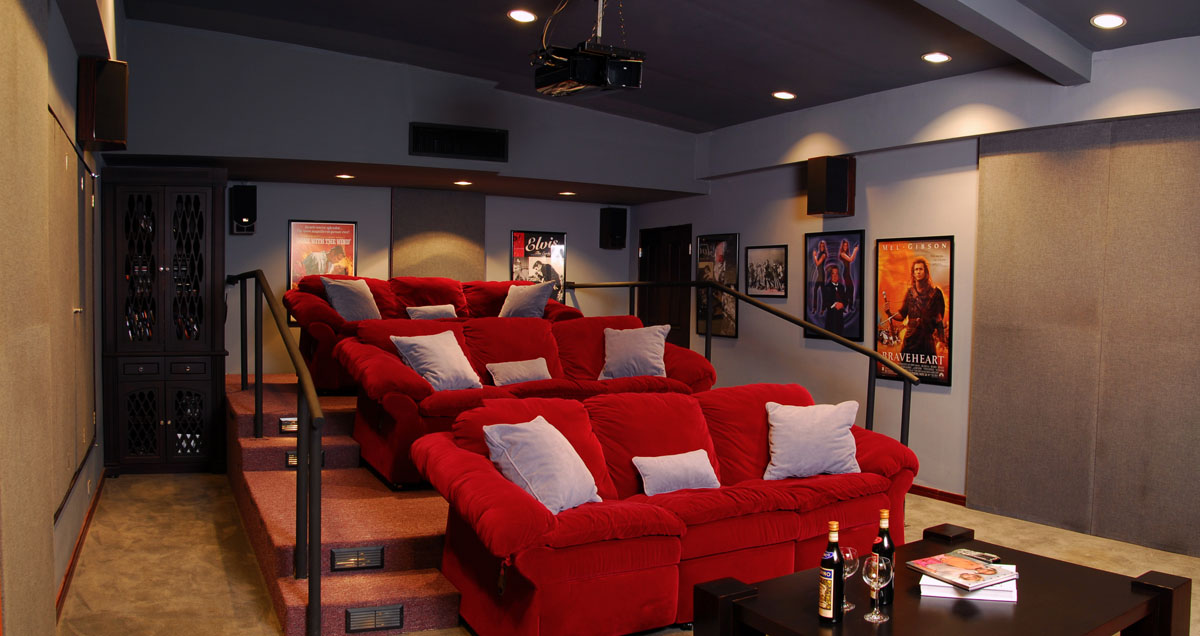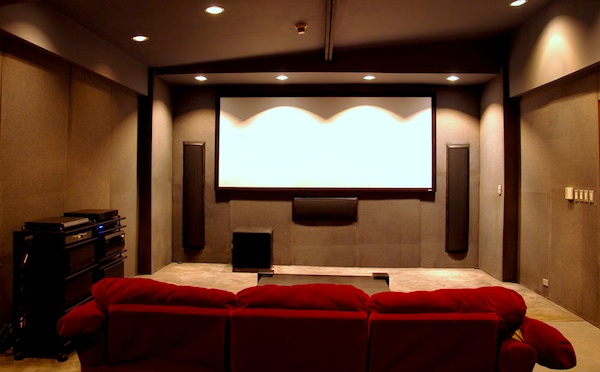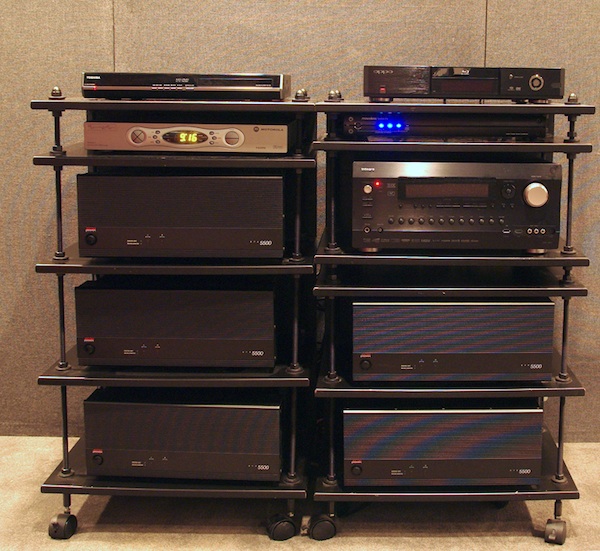Panama City DIY Theater

Since my Home Theater is contained in a separate structure from the main house, I was able to design it with it's own unique decor. I completely designed and built this theater. I also choose all the AV equipment and handled the actual installation. I did rely on a CEDIA member who is an acoustical engineer to design the shape and acoustics of the room using sophisticated computer hardware and plain-old-experience.

The theater is 30 by 17 feet and was designed under the LEDE (Live End - Dead End) principle. I have been devoted to this principle since it was well suited for serious music listening and for viewing concerts as well. Good music reproduction was a concern for me.
The LEDE principle attenuates early reflections emanating from the front speakers, thus contributing to good imaging and preventing early reflections and echoes to conflict with the natural sound. For accomplishing this principle, half of the walls along the length of the room were covered with fiberglass acoustical panels, which were made locally. They consisted of a 4-foot wide by 9-foot in height wood frame, that is 1.5” deep and filled with 1.5” thick fiberglass with 3 pound per cubic foot density. This was covered with acoustical cloth manufactured by Guilford of Maine.

The front wall, behind the screen, was covered with the same type of panels but they are 3” thick. In order to reduce standing waves, a 4” air space was allowed between the front panels and the wall. An additional 4 by 9 foot panel was placed behind the rear sofa to compensate for any screen slap effect. In order to have non-parallel surfaces, the ceiling is slanted from 9.25 feet to 10.5 feet in height. Ceiling material is gypsum board and the floor is carpeted wall to wall.
The theater was recently redone to convert to stadium style seating with wood boards covered with carpeting moving up to two levels 30 inches high each level. The wooden floor shakes at low frequencies providing an immersive effect.

Most every evening, alter dinner, I go to the theater and watch a movie. Friends and family usually come along and they occasionally call ahead to know what will be the featured film of that particular evening. Sometimes, the theater gets somewhat crowded due to the fact that between sons, daughters, daughters-in-law and grandchildren, we are a party of 15.
With the advent of Blue-Ray, I've practically ignored my extensive collection of SD DVDs and play, almost, exclusively high definition content. Also, I make HD home movies of our family trips as a hobby and watch them in the theater.

It is very interesting to observe how technology and quality has improved the last few years and how much better quality you can obtain for far less money. My current set up is a JVC DLA-RS35 projector with a Schneider anamorphic lens, which produces jaw dropping images, I consider this combination as good as it gets within a reasonable price range. Those of you who have not experienced what an anamorphic lens with a top quality projector and a wide 2.40:1 screen combination can do for you, I strongly suggest to check it out.
Equipment
BG Speakers (7.1 channel)
Integra DHC-9.9
Sony Blue Ray and Toshiba HD-DVD players
Bryston 4B, 250 watts each (main speakers in bi-amp config.)
3)Adcom 200 watt amps (center, side, rear)
JVC DLA-RS35
Schneider Anamorphic lens
ProScreen Mercury 141” diagonal front projection screen; Viewing Image 54” x 130”





























































